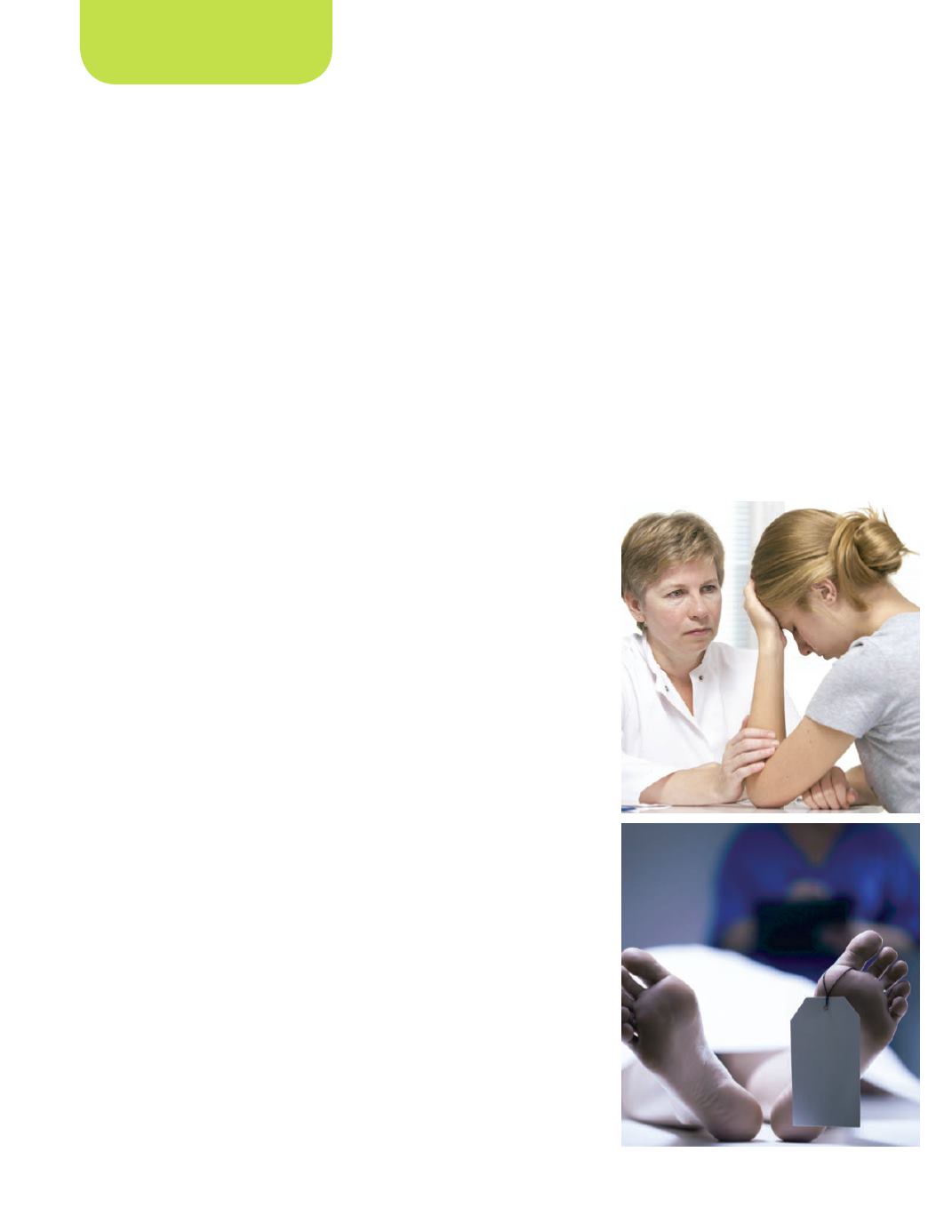
christian counseling today
Vol. 21 no. 2
91
V
ery few, if any, words in
the English language can
bring more alarm, fear, pain
or confusion than “sui-
cide.” While the last century has seen
a significant advance in effective treat-
ments for a wide variety of medical
issues and illnesses, suicide rates have
increased by 60% over the last 45 years.
1
Conservative statistics suggest that every
15-20 minutes, someone takes his or her
own life. In 2013, there was a suicide
every 12.8 minutes.
2
That’s approxi-
mately 35,000 suicides every year in this
country—and there are likely more, as
many of these deaths are often disguised
as accidents.
Probably everyone reading this
knows of someone who committed
suicide. I recently polled a college class
of nearly 700 students on this very
question… and virtually every hand
went up. The loss and resulting trauma
for loved ones is devastating.
Adult suicide is the ninth most
common cause of death; in youth ages
15-24 and for 25-34 year olds, it is
the second leading cause of death.
3
It is important to note that there are
many more
ATTEMPTS
which fail—
10-40 times more than the number
of completed suicides.
4
In the United
States alone, there are nearly 650,000
attempted suicides per year, which
translates into one suicide attempt PER
MINUTE.
5
Every attempt can also
result in long-term medical complica-
tions, as well as shame, fear, and painful
memories.
Suicide primarily affects young
people and the elderly, and over the
past two decades has become a national
concern for returning veterans who
are suffering from combat trauma and
other related deployment stress. Sadly,
more soldiers die from suicide than
combat. Approximately 22 veterans kill
themselves every day—about 8,000 a
year.
6
The Ripple Effects
Each suicide directly affects an average
of six to 10 survivors; this includes,
but is not limited to, wives, husbands,
mothers, fathers, children, siblings,
co-workers, friends, and more. Every
day, hundreds of thousands of people
are filled with confusing emotions
and complicated grief over the loss of
someone to suicide. Friends, pastors
and counselors can help loved ones by
validating their emotions and giving
grievers permission to mourn, feel and
heal... but most receive little, if any, help
at all.
Many mental health professionals,
school teachers, clergy members, first
responders, law enforcement officers,
medical professionals, youth leaders,
and educators have seen or worked with
a client/student/parishioner who has
attempted or completed suicide. They
often describe it as “the most profoundly
disturbing event of their professional
careers.” It is surely one of counseling’s
greatest “occupational hazards.” Yet,
very little exists to help prevent, assess,
intervene or assist with recovery and
relapse… until now.
Suicide: “PAIR” Certification
Program
The brand-new AACC “PAIR”
(Prevention, Assessment, Intervention
and Recovery) Certification Program
features some of world’s leading experts
in the field of suicide. This cutting-edge
training program is designed to educate
and equip everyday leaders to more
accurately and effectively understand
and assess suicide risk; develop interven-
tion strategies; help establish policies
and procedures; offer systemic and best-
practice approaches for intervention;
present legal and ethical considerations;
and become aware of, and give consid-
eration to, those with serious suicidal
behavior and those who struggle with
chronic suicide ideation.
Without question, this is one of the
most significant programs we have ever
developed. In addition to the previ-
ously mentioned benefits, the “PAIR”
Certification Program includes training
in the SAFE-T method—one of the
most widely accepted multidimensional
approaches known today for offering
help and hope.
«
Tim Cl inton, Ed.D., LPC , LMFT
from the heart
Lives in Turmoil: The Suicide Crisis









